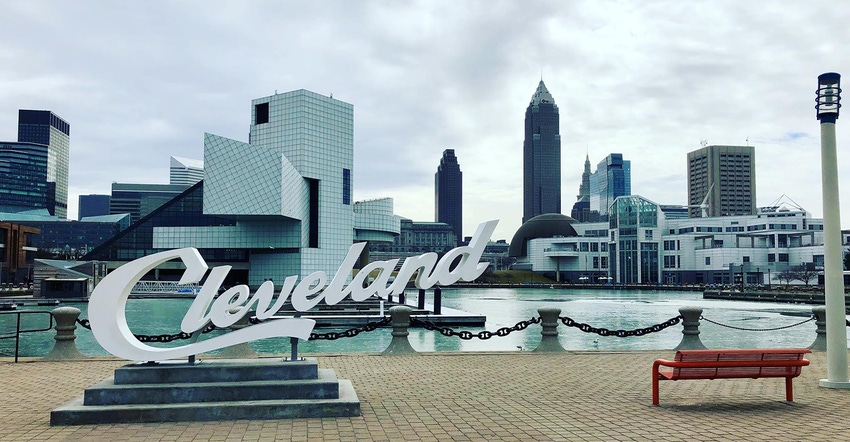Appeals Court Rules in Favor of City of Cleveland in Garbage Truck Collision Case Under Ohio Law
For those at the wheel of a garbage truck, as with other large vehicles, negotiating turns in urban traffic is a demanding and risky task. A case from Ohio illustrates the inevitable mishaps.
October 9, 2023

For those at the wheel of a garbage truck, as with other large vehicles, negotiating turns in urban traffic is a demanding and risky task. A case from Ohio illustrates the inevitable mishaps.
Terai Hines was the driver of a car involved in a collision with a garbage truck operated by the city of Cleveland. Joseph Zellous was driving the truck at the time of the crash. According to a complaint filed against the city by Hines and her passenger, Zellous failed to control the truck and struck the vehicle they occupied.
Zellous was stopped at a "T" intersection preparing to turn right into the cross street. Both streets were narrow, two-lane streets with one travel lane in each direction. He maneuvered the truck with the driver's side tires over the centerline as he prepared his turn, which required more space given the truck’s size. With a gap between the truck and the curb, he waited for the cross traffic to clear before initiating his right turn. (Incidentally, the truck was bedecked with a conspicuous warning that following drivers should be wary at intersections where the truck would customarily make wide turns in either direction.)
Unbeknownst to Zellous while he was stopped, Hines had proceeded to pass him on the right, filling the space between the curb and the truck. It turned out that she was unaware of which direction the truck would be turning and did not recall seeing the truck's turn signals.
As Zellous commenced his right turn, the two vehicles collided because Hines's vehicle was in the opening Zellous needed to turn onto the cross street. The truck’s grabber struck the left front side of Hines's vehicle.
The complaint further alleged that Zellous was negligent in the way he conducted the right turn, although the parties agreed that a large truck needed a sweeping turn to successfully navigate the tight intersection.
During Zellous's deposition, he conceded that a commercial driver's license (CDL) manual recommended a different method to conduct a wide right turn: the driver keeps the rear of the vehicle as close to the curb as possible angling left across, but entirely within, the lane of travel before commencing a wide-swing right turn. Zellous could not confirm what the manual said, but the plaintiffs did not call any witness or expert to testify that the manual represented a standard of care different from Ohio law.
Nonetheless, as the plaintiffs viewed it, Zellous was at fault by leaving a gap between his truck and the curb and by straddling the centerline of the terminating street. They claimed that the city was not immune from liability and that key issues of fact needed to be resolved in a trial. The trial court agreed. On appeal, a three-judge panel overturned the lower court ruling and decided in the city’s favor.
Under Ohio law, a local government is generally immune from liability except when injury, death or other loss stems from negligence by its employee while operating a motor vehicle in the course of doing their job.
To prove negligence, a plaintiff must prove that a defendant disregarded a legal obligation and, as a direct result, the plaintiff was injured. On a public street, the duty imposed on a vehicle operator is based on a state’s traffic laws. Thus, when a vehicle does not proceed in a lawful manner, the driver is presumptively deemed to have failed to use ordinary care.
At the early stages of a lawsuit, a plaintiff does not need to demonstrate negligence with slam-dunk certainty. It’s enough that the allegations in a complaint and a defendant’s responses raise at least a plausible disagreement on relevant and consequential factual matters. The key question before the appeals court: Based on the lower court record, could Zellous be deemed negligent in operating the garbage truck?
The plaintiffs contended that Zellous violated his duty, as established in the Ohio traffic laws and by virtue of his statements in the deposition pertaining to the CDL manual. State law requires vehicles to stay "as close as practicable to the right-hand curb or edge of the roadway" when approaching and making a right-hand turn. The plaintiffs maintained that Zellous’s credibility was questionable because he was unaware that the manual sets out a technique that goes a step further. By not closing the gap between the curb and his truck, they contended, Zellous effectively allowed Hines to proceed as she did.
The appeals court rejected that argument. “[N]o evidence in this record demonstrate[s] that the CDL manual creates an actionable standard of care under Ohio law,” said the three-judge panel. “The plaintiffs identified [rules for turns at intersections] as the controlling statute for this claim; however, that subdivision does not rigidly mandate any particular method of making right turns. The standard of care, for conducting a right turn as close to the curb or edge of the roadway, is one of practicability.”
Ohio law gives a "preferential status" to the vehicle with the right-of-way, which determines the standard of care owed. "Right-of-way" is defined as the "right of a vehicle, . . . to proceed uninterruptedly in a lawful manner in the direction in which it . . . is moving in preference to another vehicle, . . . approaching from a different direction into its or the individual's path." Furthermore, the driver with the right-of-way has no duty to yield, avoid, or even look for other drivers who may threaten to violate that right-of-way. Thus, if Zellous properly conducted the right turn although unaware of Hines's encroachment, the plaintiffs could not establish that Zellous owed Hines a duty to prevent the collision. So, exactly how proper was Zellous’s turn?
“Zellous was lawfully conducting a right turn as close as practical to the right curb given the turning radius of the truck,” the appeals court noted. “As a result, he maintained the right-of-way at the intersection as it relates to all traffic approaching him from a different direction, such as a vehicle entering the space he created to navigate the tight intersection. * * * [H]e had no duty to look for or yield to her attempt to overtake on the right because, as a matter of law, he could assume that Hines would be driving in a lawful manner. The undisputed evidence established that Zellous was not aware of Hines’s presence in the gap as he commenced his turn.”
With respect to Hines, the appeals court found that her attempt to pass Hines in the right was not lawful. “[T]here is only one lane of travel in the direction the parties were traveling at this intersection,” the panel continued. “Thus, Hines could only overtake Zellous's truck if he was turning or intending to turn left. There is no evidence that Zellous intended to turn left. * * * [S]he was required to yield to Zellous's right-of-way.”
No trial would be necessary. “[The plaintiffs] are unable to establish an issue of material fact as to whether the city employee was negligent in the operation of his vehicle . . . , and as a result, they have not demonstrated an exception to the general grant of immunity,” the panel concluded.
Hines v. City of Cleveland, No. 11218, Ohio Ct. App., Eighth Dist., July 20, 2023.
About the Author(s)
You May Also Like




